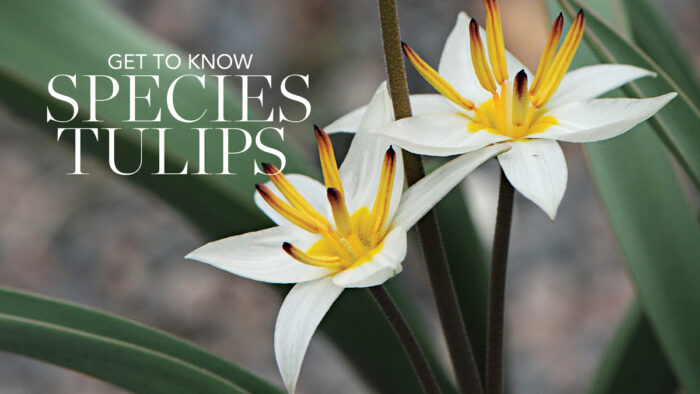
You are not alone—the yearning for spring is both universal and understandable. And for many of us, spring translates into bulbs. Even more specifically, we think of spring in terms of tulips. But maybe you are thinking twice about tulips. Perhaps an emphasis on naturalistic plantings has brought with it a leaning away from the cultivated lollipop look of the highly bred tulip hybrids. If that’s where you find yourself, species tulips are the answer.
Although collectively called “species tulips,” many of these bulbs have cultivars (like other plants), because selections capturing the best color or a color quirk have been made. Even so, these cultivars are still much closer to their wild counterparts than the typical hybrid tulips you find on the market. This naming convention is just a way to cement certain characteristics.
Species tulips boast a lot of beneficial qualities that make them sterling harbingers of spring. First of all, their performance kicks off even earlier than that of most early hybrid tulips. Generally, species tulips intersect with midseason and later daffodils (Narcissus spp. and cvs., Zones 3–9), so you get fulfillment early—right out of the starting gate.
And then there’s the more naturalistic look that the species tulips deliver. Compared to their hybrid brethren, they are downscaled in flower size and overall stature, often with gracefully arched stems. If the weather doesn’t hand out an early season heat wave, these naturalistic-looking gems will linger for several weeks to weave a colorful carpet—especially if you plant several varieties for a succession of the stampede.
Perhaps best of all, species tulips tend to be perennial if you treat them right (providing good drainage and good light, and letting the foliage mature and die back naturally). That attribute is highly welcome given that it’s best to treat most other tulips like annuals. And as far as color range is concerned, there is no compromise. Species tulips exist in vibrant or subtle pinks, reds, buttery oranges, and purples, just like the big guys. This is definitely an option you want to explore.
At a glance
Name: Tulipa spp. and cvs.
Zones: 3–8
Conditions: At least six hours of full sun; well-drained (ideally sandy loam) soil
Native range: Europe, Asia, Middle East
Planting: Sink your bulbs in the ground in fall when the soil temperature has consistently dropped to around 55°F (this encourages desired root growth, not top growth) and at a depth three times the diameter of the bulb.
CHILLING NEEDS: Tulip bulbs require a minimum of 10 weeks of soil temperatures consistently between 35° and 45°F in fall/winter. This can be achieved artificially in refrigeration—a great strategy, especially for forcing in containers.
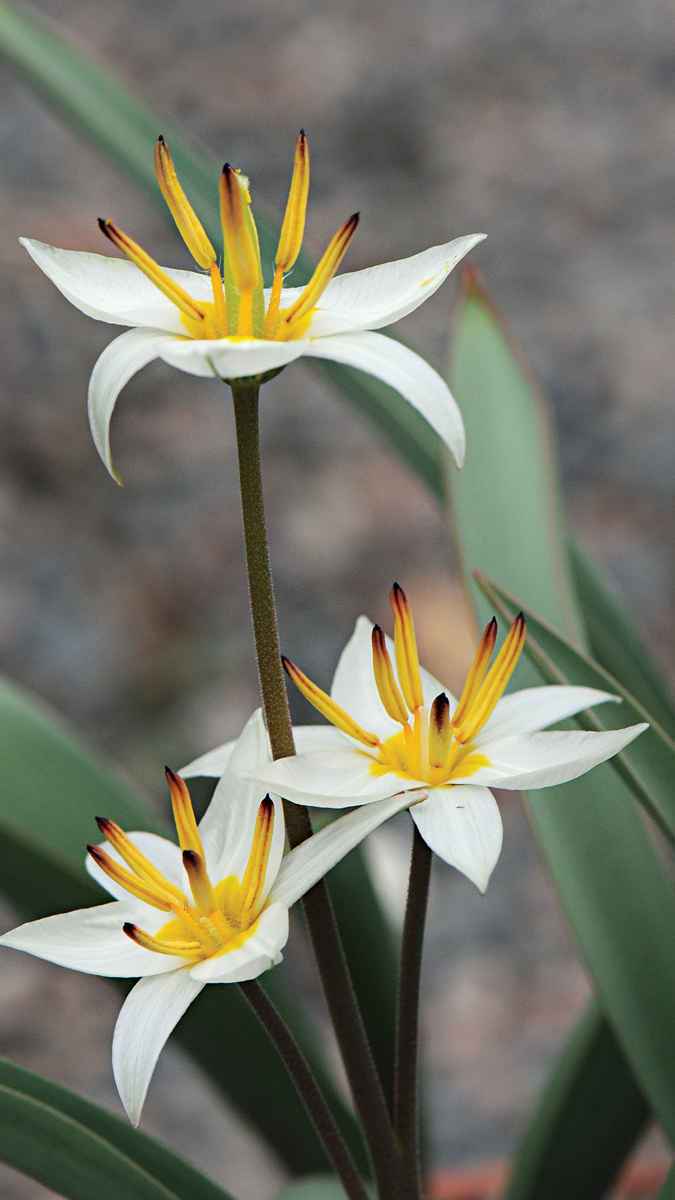
Turkestan tulip is an early bloomer that pairs well with daffodils
Although the flowers of this species from Turkestan and thereabouts are very similar to those of late tulip, albeit with reduced yellow in the center, the overall appearance is quite different. Each dark bronze flower stem holds a wand of many creamy buds—usually four to eight—and they open as a swooping cluster. One of the earliest bloomers in the tulip realm, Turkestan tulip can synchronize with miniature daffodils, making their yellow pistils pop.
Name: T. turkestanica
Height: 6 to 8 inches
Bloom time: Early to midspring
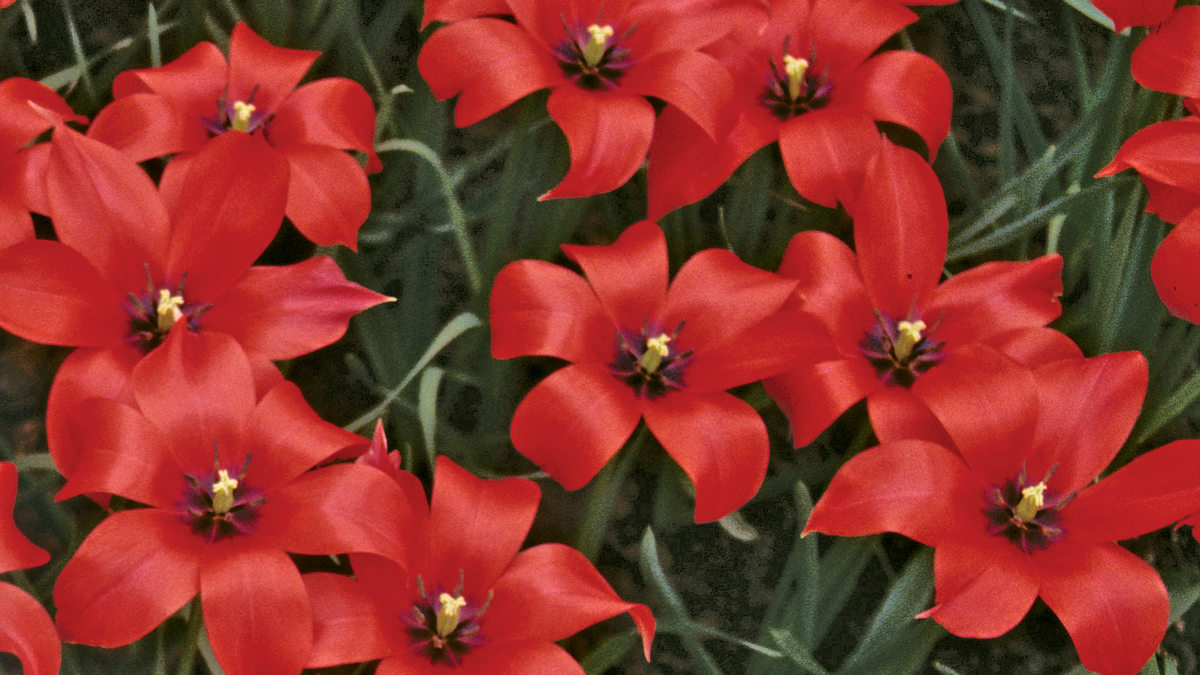
Flax-leaved tulip is a standout with dramatic red flowers and slender leaves
If bright red tulips define spring for you, plant this scaled-down version of the big red brethren. Flax-leaved tulip is a show-stopper that delivers the same color punch but not the stiff growth habit. This petite tulip dazzles with shiny lipstick-red petals that are contrasted with a black eye, making the message more dramatic. The foliage is another plus of this Iran, Afghanistan, and Central Asia native that is often chosen as a rock garden plant. The pencil-thin leaves are so slender that they do not read as an eyesore needing to be hidden beneath fellow bedmates during the plant’s dying-back process. Instead, they are hardly noticeable.
Name: T. linifolia
Height: 4 to 6 inches
Bloom time: Mid to late spring
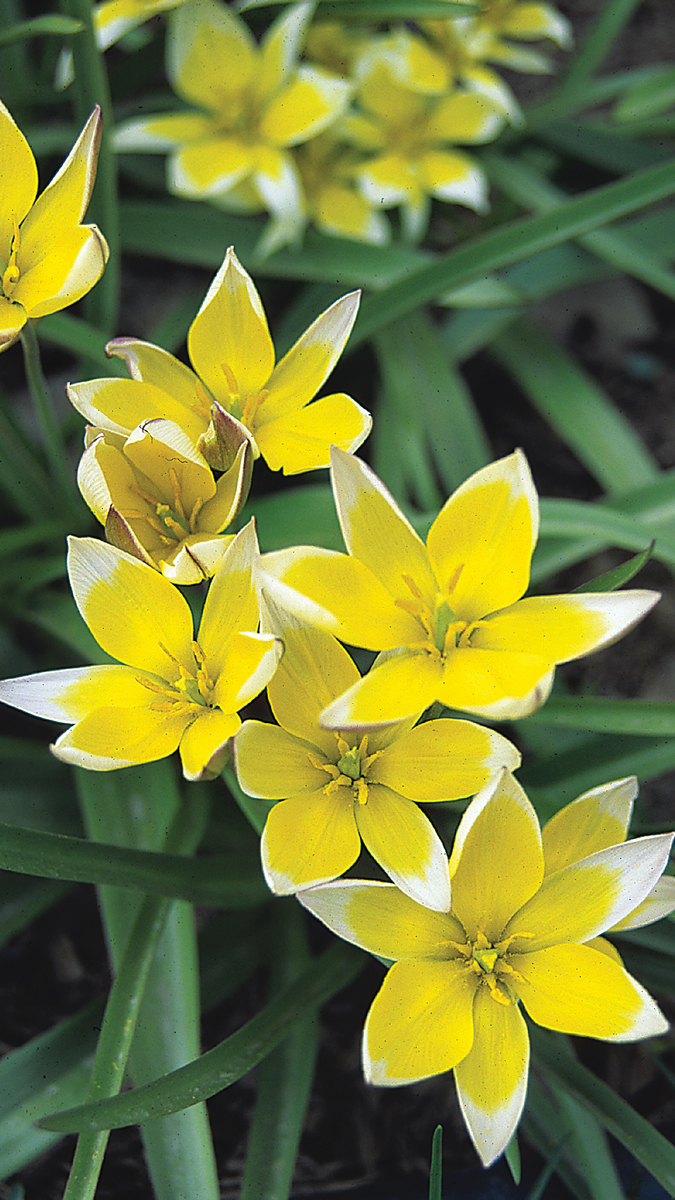
Late tulip brightens the garden with star-shaped blossoms
A great performer year after year when given a sunny location and good drainage, late tulip swells its sparkling white, star-shaped blossoms to reveal an ultrabright buttercup-yellow heart. Each bulb produces several upward-facing flowers. The pencil-thin foliage is hardly noticeable while it is feeding the bulb for the following year’s performance, and the lax flower stems make this little species look like a wildling. Native to rocky subalpine locations in Central Asia, late tulip is said to tolerate humusy garden soil better than most tulips. As far as timing (the name says it all), this is one of the last species to bloom in spring.
Name: T. tarda
Height: 4 to 6 inches
Bloom time: Mid to late spring
|
|
Praestan’s tulip provides taller options for beds and borders
Larger and taller than their fellow species tulips and with broad foliage that looks like the hybrids’, Praestan’s tulips lead the pack to bloom earlier than most species tulips in the season. ‘Shogun’ opens a rich shade somewhere between melon and pumpkin. ‘Bloemenlust’ is fire engine red. Both are super easy to grow in the ground or as forced bulbs and are very noticeable from a distance. In fact, they read like a bridge between wild and cultivated tulips. Mix them with grape hyacinths (Muscari spp. and cvs., Zones 2–9) for a stunning combo.
Name: T. praestans and cvs.
Height: 10 to 14 inches
Bloom time: Early spring
Lady tulip is a showy performer, even in the South
Not only do the many varieties of T. clusiana boast all the aforementioned species tulip benefits, but they also feature another strong suit: They can stage their show in the South. That’s right—they don’t require a long chilling period to perform. Among lady tulips (also called “candlestick tulips”), ‘Lady Jane’ leads the popularity poll, while ‘Cynthia’, ‘Tinka’, and the earlier-flowering ‘Tubergen’s Gem’ (T. clusiana var. chrysantha ‘Tubergen’s Gem’) are worthy of acquiring via mail order as well. These selections are particularly showy members of the species realm, with white or pale-yellow petals surrounded by brighter pink to red outer petals to achieve a striking candy-stripe effect.
Although the blossoms are not quite the size of a hybrid tulip’s, they are certainly showy. Native to Iraq, Iran, Afghanistan, Uzbekistan, Pakistan, and the western Himalayas, this stoic little species has broken loose to naturalize in France, Spain, Portugal, Italy, Tunisia, Greece, and Turkey. And because it does not require a lengthy chilling sequence, it is a prime candidate for forcing, beginning to perform after only 6 weeks or so in refrigeration.
Name: T. clusiana and cvs. (syn. T. aitchisonii and cvs.)
Height: 6 to 10 inches
Bloom time: Mid to late spring
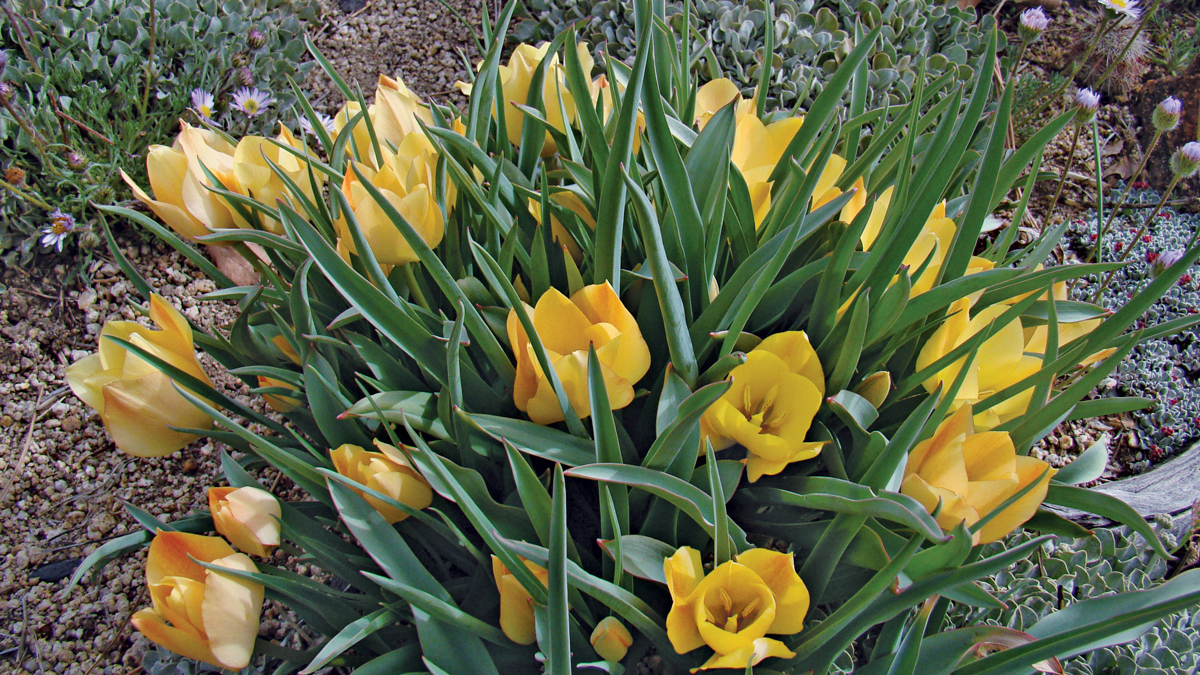
Batalinii tulip adds a pop of color to rock gardens and arid locations
Native to rocky hillsides of Central Asia, this species varies between butter yellow and salmon and has wavy petals that flare slightly at their tips, creating a nice spin on the usual goblet-like tulip presentation. Considering this tulip’s chosen habitat of origin, it is often successfully plugged into rock gardens, where its diminutive stature can be admired easily. However, batalinii tulip isn’t one of the more readily available species, even from mail-order sources, so definitely consider adding it to your spring lineup if you come across it. Also, although references say the species name is a synonym of T. linifolia, there is an obvious naming discrepancy regarding this very different-looking tulip.
Name: T. batalinii
Height: 4 to 10 inches
Bloom time: Mid to late spring
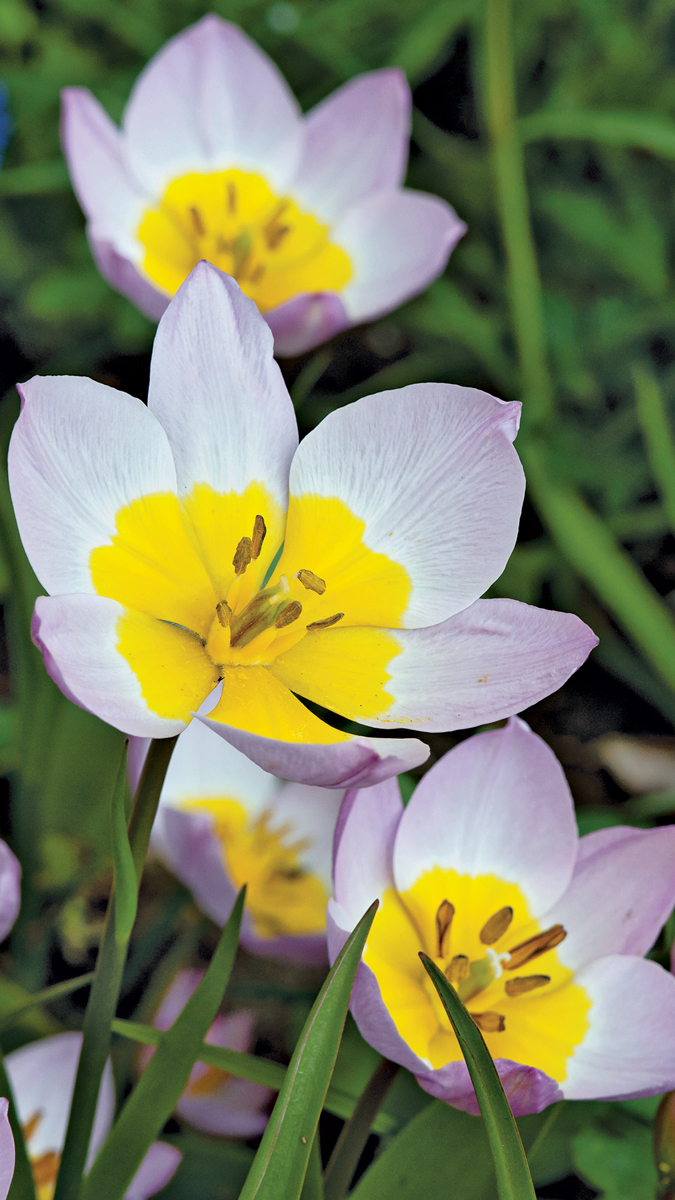
‘Lilac Wonder’ candia tulip delivers easygoing beauty with lilac-pink blooms
For an unexpected color combo, ‘Lilac Wonder’ candia tulip is one of the easiest species tulips to grow and is quite willing to perennialize when given optimal growing conditions. In fact, when tucked into the garden after being forced, this bulb still willingly returns for several springs. The flowers are lilac pink with bright sunny yellow centers (when the sun coaxes buds fully open), expanding the color spectrum beyond the reds and yellows displayed in most of the species. Native to Crete, candia tulips tend to have shorter stems than other tulip species. This selection is an absolute charmer near entryways and en masse along walkways.
Name: T. saxatilis ‘Lilac Wonder’ (syn. T. bakeri ‘Lilac Wonder’)
Height: 6 to 10 inches
Bloom time: Midspring
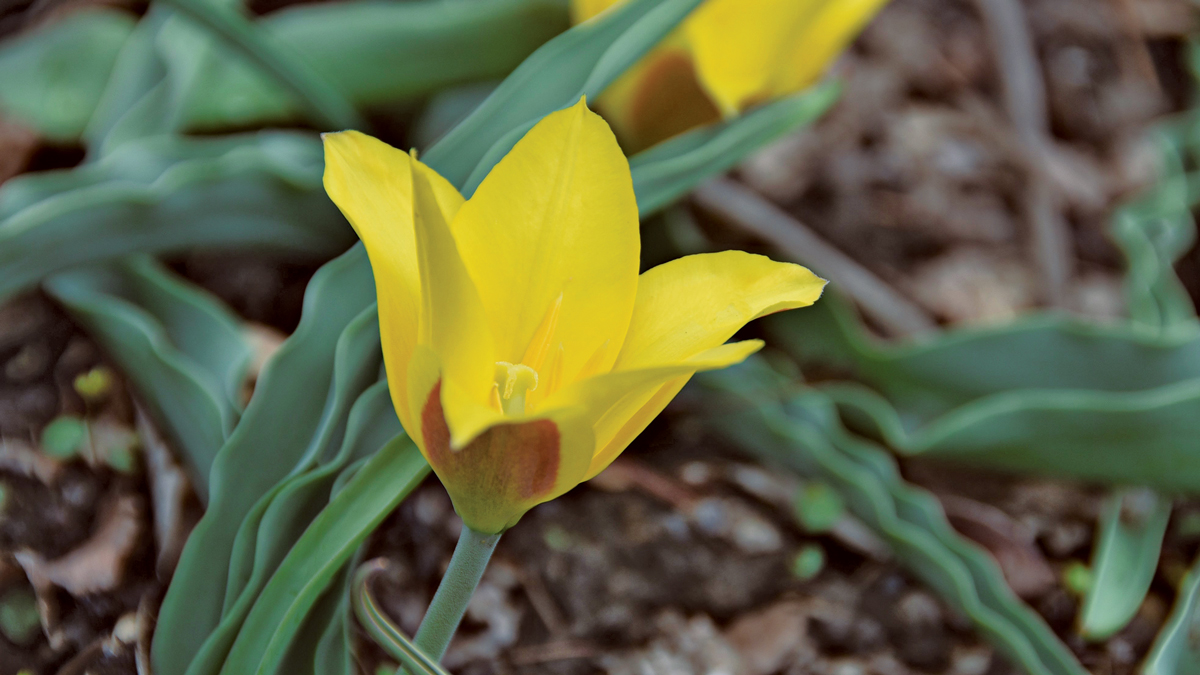
Kolpakowsky’s tulip sports cheery blooms that are great for massing
Hailing from Central Asia and collected as early as 1877, this little heirloom tongue twister has acid yellow flowers that stand out in a spring garden. The blossoms have slender petals similar to those of the lady tulips, but the flower stems tend to be shorter. Plant the bulbs in masses to best ramp up their message.
Name: T. kolpakowskiana
Height: 6 to 8 inches
Bloom time: Early to midspring
|
|
|
Low-growing tulip offers striking twists on color and form
Definitely earning the diversity award, this species has spawned several color spins—from white-with-purple-centered ‘Alba Coerulea Oculata’ to magenta ‘Persian Pearl’ with its bright yellow eye. With more of a deep red color, ‘Samantha’ is a later-blooming double spin that hardly looks like a species tulip except for the thin leaves and short flower stems.
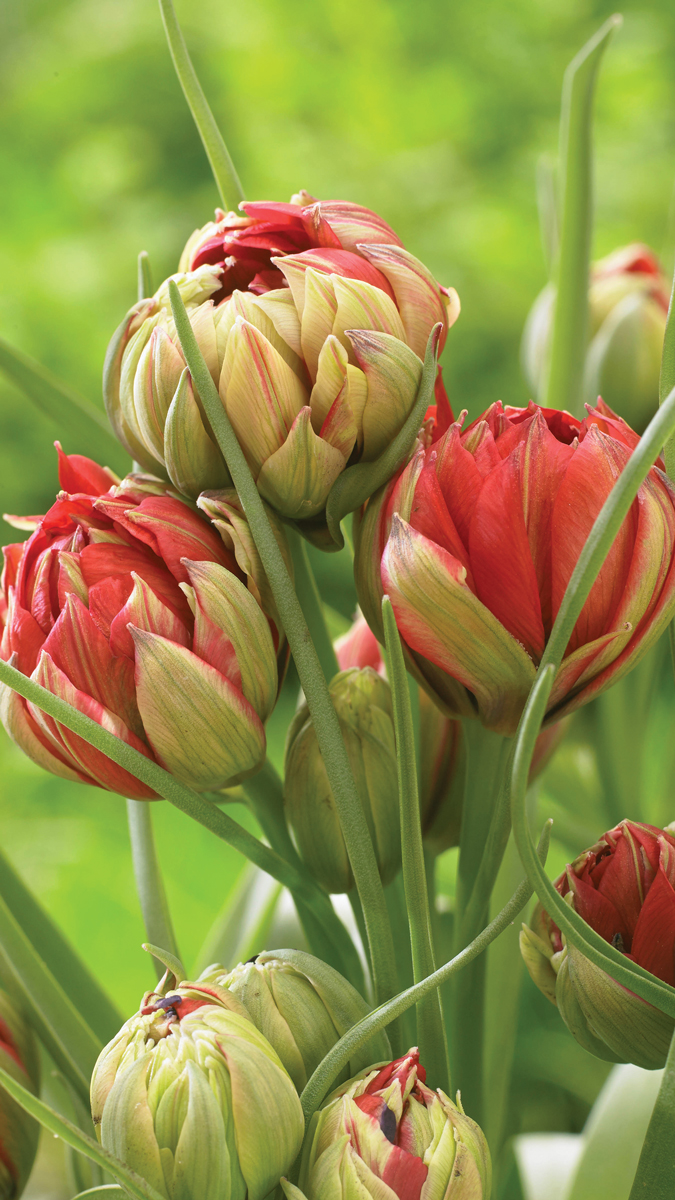
Name: T. humilis and cvs. (syn. T. pulchella and cvs.)
Height: 4 to 8 inches
Bloom time: Mid to late spring
| Technique |
Protect your assets
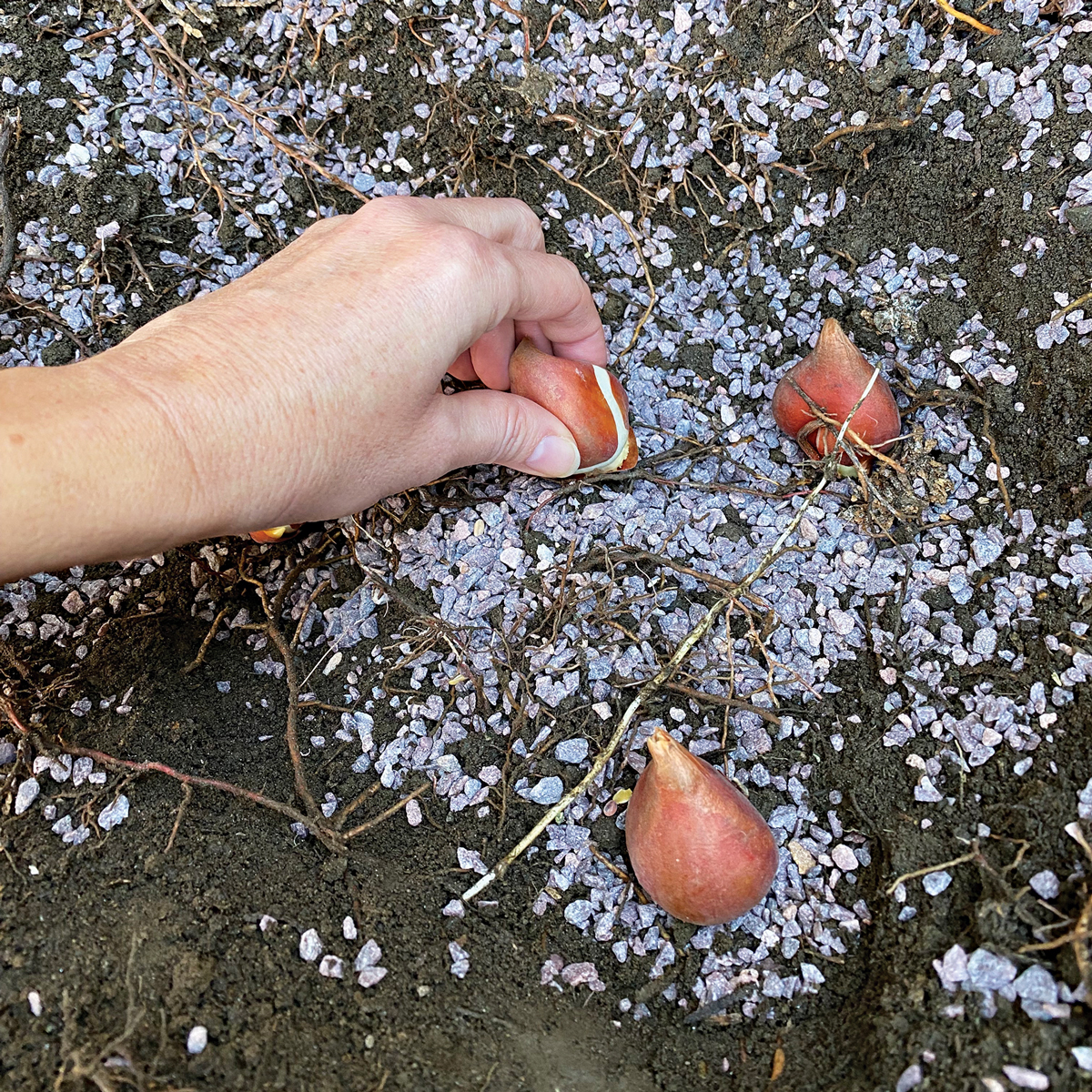
Undoubtedly you are wondering about all the critters that carouse with the sole purpose of stealing your tulip thunder. Just like the big guys, species tulip bulbs and their growing parts are imperiled by nibbling creatures. One secret is to mix crushed oyster shells (aka chicken grit) into the soil around the bulbs when planting them in autumn. This will dissuade chipmunks, squirrels, and other digging demons. The moment the foliage breaks ground in spring, spray it with deer repellent and then keep the applications coming, especially when the repellent is washed off in spring showers.
Sources
- Brent and Becky’s Bulbs, Gloucester, VA 877-661-2852 brentandbeckysbulbs.com
- John Scheepers, Bantam, CT 860-567-0838 johnscheepers.com
- McClure & Zimmerman Randolph, WI 800-883-6998 mzbulb.com
Tovah Martin is a horticulturist, lecturer, and award-winning author in northwestern Connecticut.







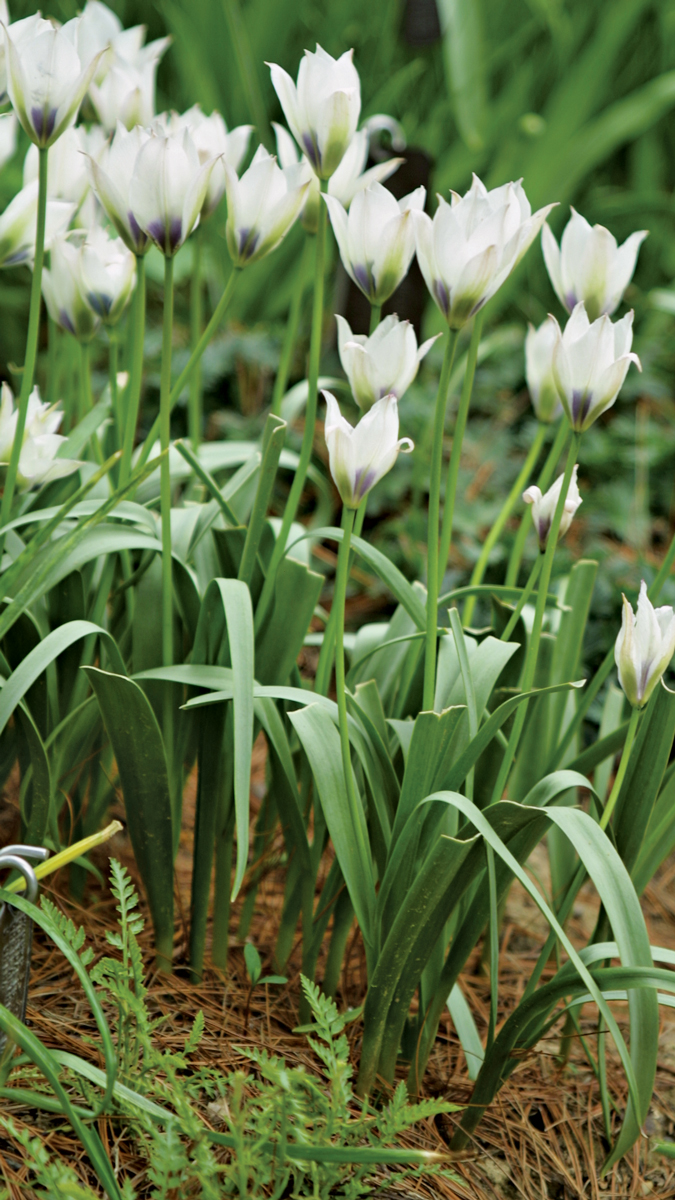


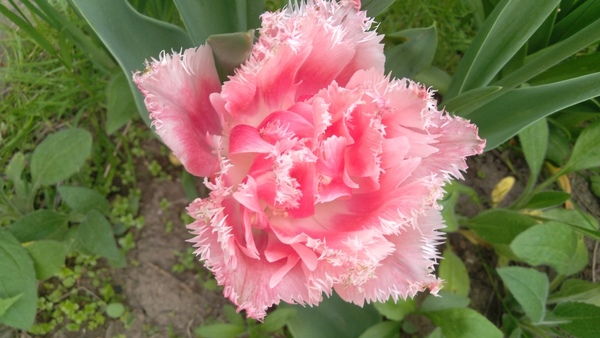














Comments
Log in or create an account to post a comment.
Sign up Log in